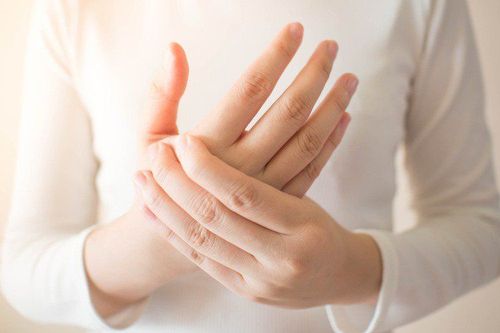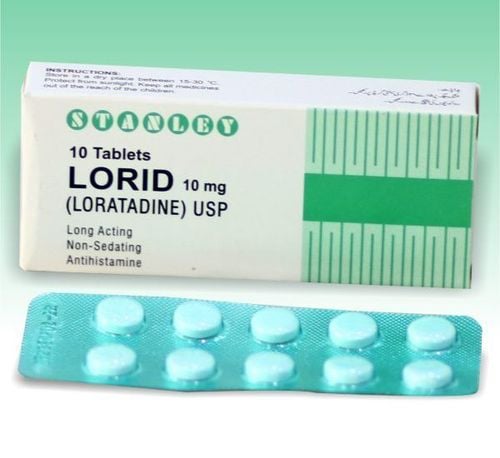This is an automatically translated article.
Astaxanthin is a carotenoid pigment that occurs in salmon, microalgae, yeast and shrimp, and other marine organisms. This substance is most commonly found in Pacific salmon and gives the fish a slightly pink color. The antioxidant astaxanthin offers many health benefits.1. Overview What is astaxanthin?
Astaxanthin is a red pigment that belongs to a group of carotenoid chemicals. Astaxanthin occurs naturally in some algae, giving salmon, shrimp, and other seafood their pink or red color. Besides fish oil and omega-3 fatty acids, this is also an ocean nutrient that can improve functions in the human body.
Astaxanthin is an antioxidant, which can protect cells from damage, as well as improve the way the immune system works. Namely, healthier skin, increased endurance, heart health, reduced joint pain and possibly even cancer treatment in the future.
Oral astaxanthin supplements are used in the treatment of Alzheimer's disease, Parkinson's disease, stroke, high cholesterol, liver disease, age-related macular degeneration (age-related vision loss) and cancer prevention. It is also used for metabolic syndrome, which includes conditions that increase the risk of heart disease, stroke, and diabetes. Taking astaxanthin has also been shown to improve exercise performance, reduce muscle damage and muscle soreness after exercise, prevent sunburn, improve sleep, treat carpal tunnel syndrome, indigestion, and infertility. male fertility, menopausal symptoms and rheumatoid arthritis.
In addition, astaxanthin cream applied directly to the skin provides sun protection, wrinkles reduction and a number of other cosmetic benefits.
In foods, the antioxidant astaxanthin is used as a colorant for salmon, crab, shrimp, chicken and eggs. In agriculture, astaxanthin is used as a supplement for laying hens.

Kem astaxanthin thoa trực tiếp lên da giúp chống nắng và giảm nếp nhăn
2. How to take astaxanthin safely
Astaxanthin is ABSOLUTELY SAFE when consumed from natural food sources. Meanwhile, Astaxanthin is POSSIBLY SAFE when taken as an oral supplement in doses of 4-40mg/day for up to 12 weeks, or 12mg/day for 6 months. It is also safe when used in combination with other carotenoids, vitamins and minerals at 4mg/day for 12 months. Side effects of astaxanthin can include increased bowel movements and red stools. High doses of astaxanthin can cause stomach upset.
There is not enough warning information about the use of astaxanthin during pregnancy and lactation. Therefore, to stay safe, this group of objects should be avoided when not absolutely necessary.
MORE: Should you take an antioxidant supplement?
3. Benefits of the antioxidant astaxanthin
3.1. Antioxidants As we know, antioxidants in general are very good for health. The antioxidant astaxanthin alone has properties to improve blood flow and reduce oxidative stress in smokers and overweight people, especially supporting cancer treatment. According to a study comparing carotenoids, astaxanthin has the highest antioxidant activity, helping to effectively fight free radicals.

Sstaxanthin có công dụng chống oxy hóa
3.2. Cancer Due to its antioxidant properties, there has been a lot of research on how to use astaxanthin to treat various cancers. One study found short- and long-term benefits in breast cancer treatment, including inhibiting breast cancer cells from growing.
The high cost of pure astaxanthin is a limitation in cancer research and treatment.
3.3. Skin Astaxanthin can be used as a topical cream to promote healthy skin. A 2012 study found that a combination of topical and oral astaxanthin can smooth wrinkles, reduce age spots, and help retain moisture in the skin. There have been positive results in both men and women, but more research is needed to confirm these findings.
3.4. Support for exercise There has been a lot of research on the effects of astaxanthin on endurance, as well as fatigue levels after exercise. Studies in mice show that the antioxidant astaxanthin has the ability to promote the body's use of fatty acids, help increase endurance, and prevent muscle and bone damage.
However, to date there is a lack of evidence on the effects of astaxanthin on human exercise performance. One human study did not find astaxanthin supplements to reduce muscle injury.
3.5. Heart health Researchers are also looking at claims astaxanthin benefits heart health. A 2006 study examined the effects of astaxanthin on hypertensive rats. Results indicate that this substance can help improve elastin levels and artery wall thickness.
However, there is still not enough evidence to prove that astaxanthin is effective in preventing heart disease and helping to lower cholesterol.
3.6. Joint Pain Astaxanthin also holds promise for treating joint pain, including conditions such as rheumatoid arthritis and carpal tunnel syndrome. So far, however, the results obtained are contradictory.
Some studies show that astaxanthin may reduce symptoms of inflammation and pain associated with arthritis. However, another study found no relationship between carpal tunnel syndrome and astaxanthin.

Astaxanthin cũng có kỳ vọng điều trị viêm khớp dạng thấp
3.7. Male fertility In a 2005 study, astaxanthin showed positive results on male fertility. Over the course of 3 months, researchers examined 30 different men with a history of infertility and found improvements in fertility and sperm parameters (sperm count and motility). ) in the group receiving high doses of astaxanthin. But because this was a relatively small study, more evidence is needed to support this claim.
While scientists are still undecided on what the benefits of astaxanthin are, you can still believe it's a good antioxidant. Although the antioxidant astaxanthin is available in supplement form, choosing natural, whole foods should be preferred to ensure the nutrients you need. To benefit, try to eat some salmon 1-2 times per week, including a simple grilled salmon that's good for a light dinner.
Please dial HOTLINE for more information or register for an appointment HERE. Download MyVinmec app to make appointments faster and to manage your bookings easily.
Reference sources: healthline.com, webmd.com












